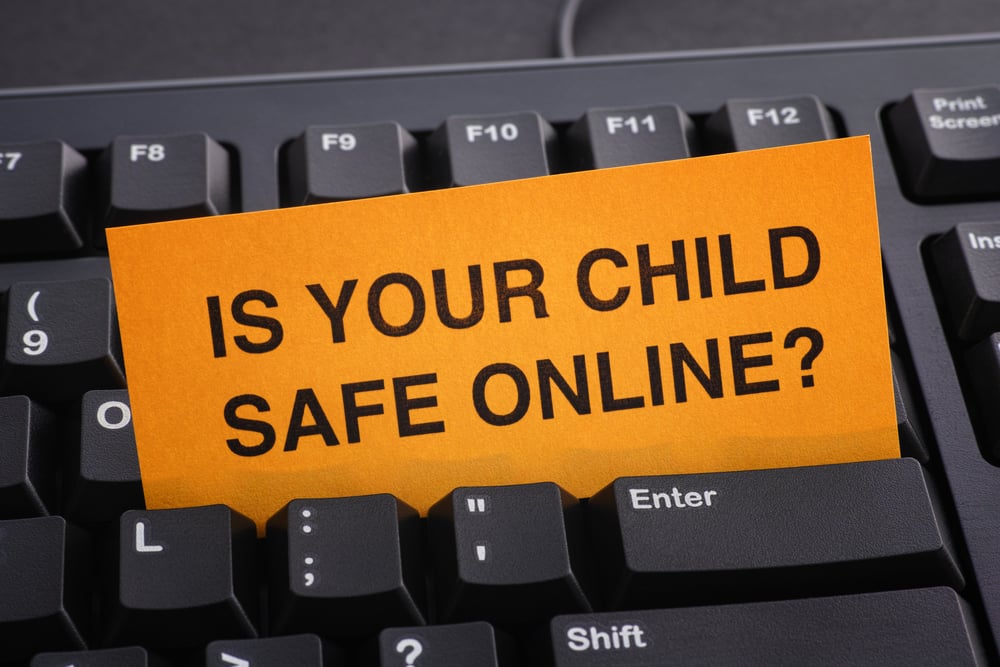Kids today grow up surrounded by screens and online connections. From toddlers watching videos on tablets to teens navigating social media, the internet is woven into childhood in ways parents of previous generations never experienced. This new reality brings amazing opportunities for learning and connection, but also introduces risks that can feel overwhelming.
As parents, we want to give our kids the benefits of technology while keeping them safe from its dangers. Finding this balance isn’t always easy, but it’s definitely possible with the right approach.
This guide walks you through practical steps to protect your children online without hovering over their shoulders 24/7. We’ll cover everything from setting up effective parental controls to having those important conversations about online safety that build trust and good judgment.
Why Internet Safety for Kids Is Important
The online world exposes children to risks that simply didn’t exist a generation ago. Young kids might accidentally stumble across violent or sexual content while searching for innocent terms. Older children face cyberbullying that follows them home from school, making it impossible to escape. Online predators use games and social platforms to target vulnerable kids, while scammers design schemes specifically to trick young users.
Even everyday social media use can lead to problems when kids overshare personal information or post content they’ll regret later. A seemingly innocent photo or comment can spread far beyond its intended audience, affecting a child’s reputation or emotional well-being.
Teaching internet safety isn’t about scaring kids away from technology. It’s about giving them the skills to enjoy the benefits while avoiding the pitfalls. Children who learn these lessons early develop habits that protect them throughout their digital lives.

Parental Controls & Monitoring Tools
The right tools can give you peace of mind while your children explore online. The MMGuardian Kids Phone offers particularly comprehensive protection — it’s a dedicated phone preloaded with MMGuardian’s powerful parental control software, making it a complete, ready-to-use solution for families.
Unlike the MMGuardian app (which you can install separately on a phone you already own), the MMGuardian Phonecomes with everything built in — so there’s no setup hassle or compatibility issues. It includes features that go well beyond basic content filtering, such as:
- AI-powered text monitoring to detect signs of cyberbullying, sexting, or predatory behavior
- Real-time location tracking with geofencing alerts
- Remote screen time controls and app management
- Web filtering and safe browsing enforcement
This all-in-one kids phone is ideal for parents who want robust monitoring without needing to configure everything themselves. It combines hardware and software into a streamlined, safer smartphone experience tailored for children.
For younger children, setting up safe search filters on Google and YouTube creates a first line of defense against inappropriate content. Most browsers and devices also include built-in family controls that limit access to certain websites or apps based on age ratings.
Remember that no technical solution is perfect. Kids are naturally curious and often surprisingly tech-savvy. A determined teen might find ways around filters. That’s why monitoring tools work best as part of a broader approach that includes open communication and education.
However, it’s important to note that the MMGuardian Phone is a different story. Unlike standard tools, the MMGuardian Kids Phone is designed to be non-bypassable. Kids cannot disable the software, access safe mode, or perform a factory reset to get around the protections. This makes it one of the most secure and tamper-proof solutions available — giving parents extra peace of mind when it comes to device-level enforcement.
The goal isn’t constant surveillance but creating safer boundaries while children develop their own good judgment. As kids demonstrate responsibility, you can gradually adjust settings to give them more freedom.
Open Communication & Education
The most powerful tool for keeping kids safe online isn’t software—it’s conversation. Talk with your children regularly about what they’re doing online, who they’re connecting with, and what they enjoy. Make these discussions casual and judgment-free so kids feel comfortable sharing.
Teach concrete safety rules in age-appropriate ways:
- For younger kids: “Never tell people online your real name, address, or school.”
- For older children: “Think about how a post might look to a future employer or college admissions officer.”
Role-play scenarios they might encounter: “What would you do if someone you don’t know asks to meet in person?” or “How would you respond if someone asks for photos of you?”
Create a family atmosphere where kids know they can come to you if something feels wrong online. Reassure them they won’t lose technology privileges for reporting problems. Many children hide concerning interactions because they fear punishment or losing access to their devices.
Setting Boundaries and Healthy Habits
Creating tech-free zones and times helps balance online and offline life. Many families make mealtimes and bedrooms screen-free to encourage face-to-face interaction and better sleep. The American Academy of Pediatrics suggests:
- Under 18-24 months: Video chatting is fine, but otherwise limit screen use
- Ages 2-5: No more than 1 hour per day of high-quality programming
- Ages 6+: Consistent limits on time and types of media
These aren’t rigid rules—they’re starting points to adapt to your family’s needs. What matters most is that screen time doesn’t crowd out physical activity, sleep, schoolwork, and in-person social interaction.
Help kids discover offline activities they enjoy. A child passionate about art, sports, music, or reading has natural reasons to put down devices. When screen time ends, have alternative activities ready to prevent the “I’m bored” complaints.
Privacy Settings & Digital Footprint Awareness
Most kids don’t realize how public and permanent their online activities can be. Walk through privacy settings together on the apps and platforms your child uses. Show them how to:
- Make accounts private rather than public
- Limit who can see posts and send messages
- Turn off location sharing in photos and apps
- Review and approve tags before they appear
Explain the concept of a digital footprint in simple terms: “Everything you post online leaves a trail that can last forever, even if you delete it later.” This isn’t meant to scare them but to encourage thoughtful posting.
For teens, try this exercise: Look up their name together (with their permission) to see what appears. This concrete demonstration helps them understand how visible they might be online.

Handling Online Threats: Blocking, Reporting, and Scams
Kids need to know exactly what to do when they encounter something troubling online. Teach them how to:
- Block users who make them uncomfortable
- Report inappropriate content to the platform
- Take screenshots of concerning interactions before blocking
- Recognize and avoid clicking suspicious links
Online gaming deserves special attention since it often involves interaction with strangers. If your child plays multiplayer games, discuss which personal information is safe to share (usually none), and how to mute or report players who behave inappropriately.
For older kids, explain common scams like fake contests, “free” offers that require credit card information, or messages claiming their account has been compromised. The rule of thumb: if something seems too good to be true or creates a sense of urgency, it’s probably a scam.
Encouraging Critical Thinking & Responsible Use
The internet is filled with misleading information, from harmless exaggerations to dangerous falsehoods. Help kids develop a healthy skepticism by asking questions like:
- “Who created this content and why?”
- “How do we know if this information is accurate?”
- “Is this trying to sell something or change my opinion?”
Point out the difference between news articles, opinion pieces, and advertisements, which often blur together online. Show them how to verify information by checking multiple sources.
Teach responsible social media use by discussing how posts might affect others. Before posting about or tagging friends, they should consider whether the person would be comfortable with that content being shared.
Collaborating With Schools and Community
You’re not alone in teaching internet safety. Many schools now include digital citizenship in their curriculum. Ask teachers what they’re covering so you can reinforce these lessons at home.
Look for community resources like library programs or online safety workshops offered by local police departments or nonprofit organizations. These events can introduce important concepts from trusted voices outside the family.
Parent networks can also be valuable for staying informed about apps and online trends popular with local kids. Other parents might alert you to concerning platforms before your child mentions them.
Maintaining Trust & Open Dialogue
As children grow, the balance between protection and privacy shifts. Teens need some private space to develop independence, but they still need guidance. This transition works best when built on trust and open communication.
If you discover your child has broken internet safety rules, try to respond calmly. Ask questions to understand what happened before deciding consequences. Was it a mistake, peer pressure, or deliberate rule-breaking? Your response should match the situation.
Remember that the goal isn’t perfect compliance with rules but helping kids develop good judgment they’ll carry into adulthood. Sometimes learning from small mistakes under your guidance prevents bigger problems later.
Conclusion & Final Tips
Internet safety isn’t a one-time conversation or a set-it-and-forget-it technical solution. It’s an ongoing process that evolves as your child grows and technology changes.
Stay informed about new apps and platforms popular with kids. You don’t need to become an expert on everything, but understanding the basics helps you ask good questions and set appropriate boundaries.
Most importantly, keep the lines of communication open. When kids know they can talk to you about online experiences without judgment or overreaction, they’re much more likely to seek your help when it really matters.
Tools like MMGuardian — whether through its secure kids phone or flexible app — can play a valuable role in this process, offering parents peace of mind while giving children a safe space to learn and grow. The digital world can be wonderful when navigated safely. With your guidance and the right tools, your children can enjoy its benefits while developing the skills to protect themselves now and in the future.






